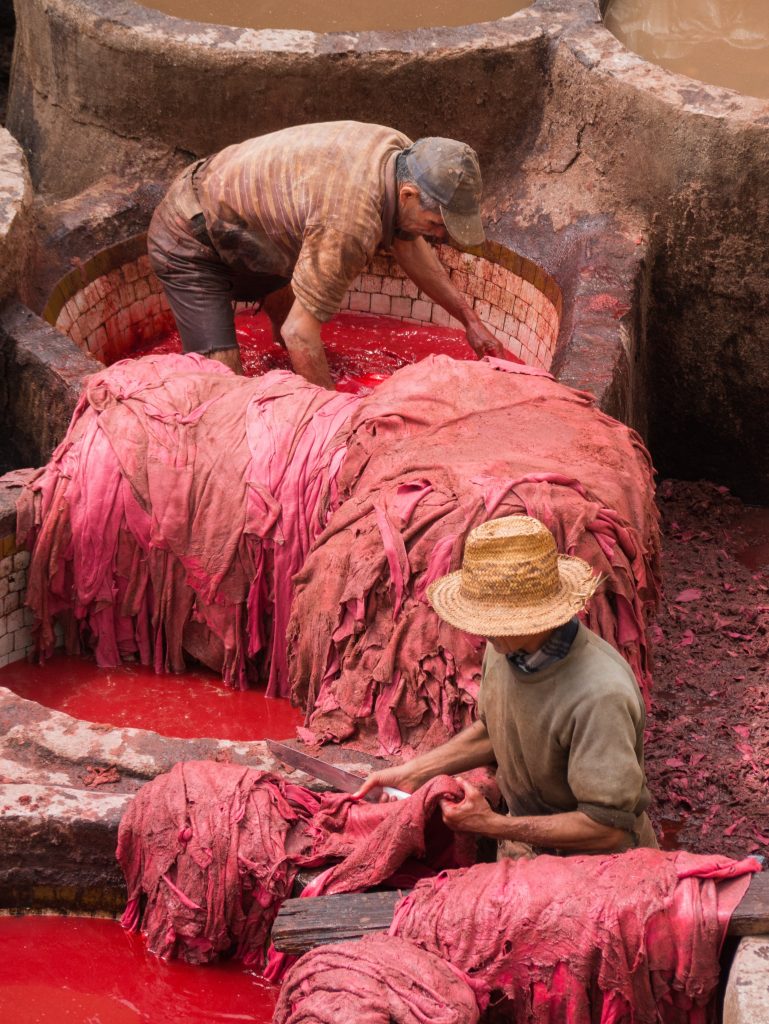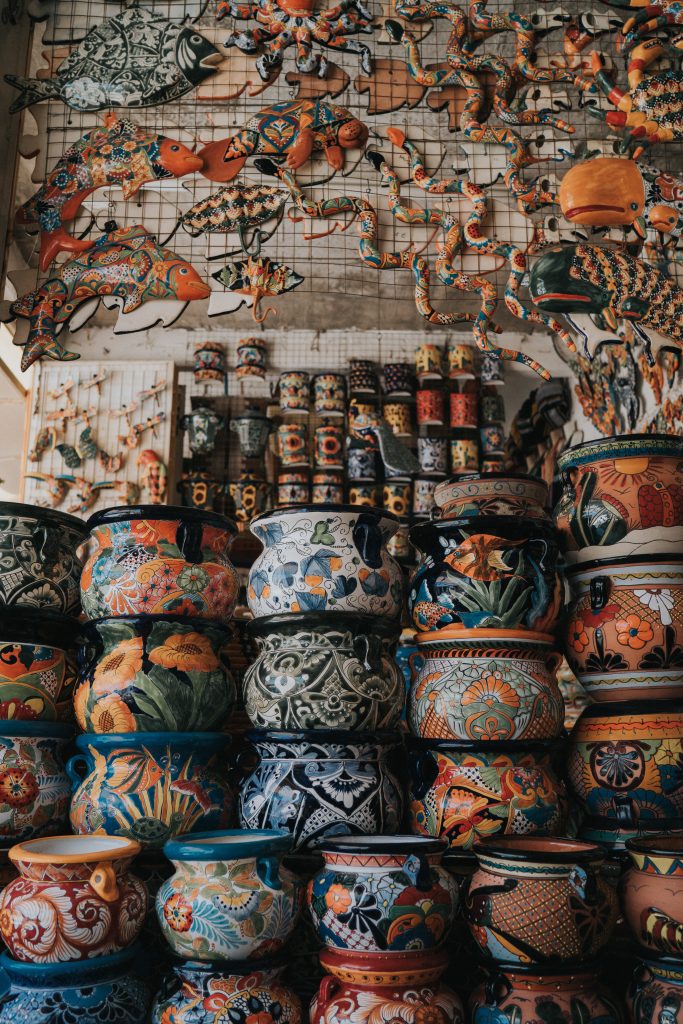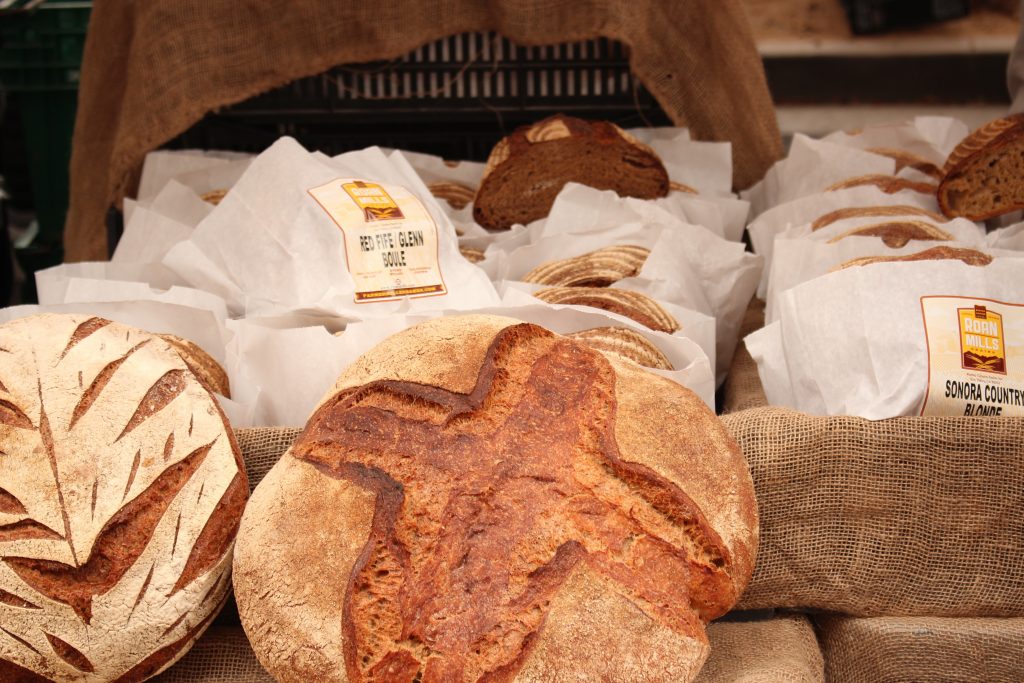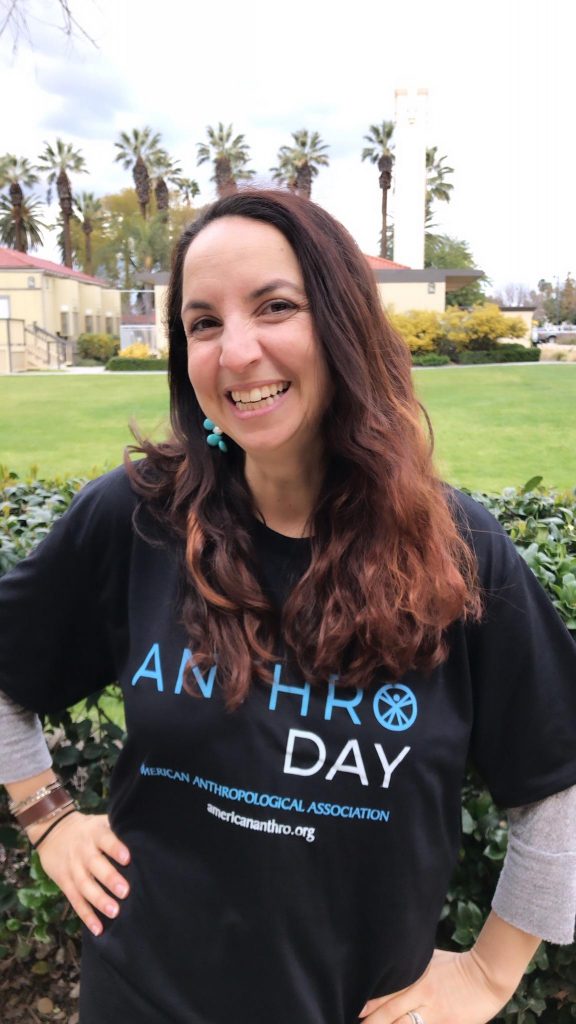Exploiting Shopping Season: The Power of Purchase
By Julie Goodman-Bowling, Ph.D
My Story:
Many years ago, when I was an undergraduate student at Biola University, my hallmates got together for an event. Little did I know that in that one evening, the trajectory of my life would be so dramatically determined. A group of about 20 college students, we sat around a table while drinking coffee and talked about disadvantaged, mistreated factory workers for a major apparel corporation. I was stunned by how much I did know about something so benign, so seemingly mundane as my daily wardrobe. Like many college students, for us, the call to “social justice” meant doing something significant for the good of the world, however small. Our contribution was writing letters to congressmen, letting them know that we were concerned about the conditions of garment factory workers both locally and overseas and urging them to enforce penalties and fines for a major corporation whose unlawful practices broke many labor codes and violated human rights. I suddenly cared about where my clothes, and many other of my things were mined, assembled, and imported from along with the people involved in every step of the process. Schooled in the ways of “culture” and various practices throughout the world, my perspective of global capitalism and its plethora of effects on the every-day lives of people around the world was dim; that night was when my interest in globalization, culture, capitalism and labor began. Anthropology is the study of humanity across time and culture and touches every part of the human experience – including how we get the stuff we need (and want) to how a broad global system of exchange has so drastically affected the everyday lives of real people “on the ground.”

Why Migration and Labor?
A lot has happened since then – personally, professionally, and globally. I went on to study factory workers in the Los Angeles Garment District as part of my master’s thesis at Cal State Fullerton. I interviewed several workers, primarily from Latin America who shared their stories with me. One woman’s plight remains embedded in my memory. Lourdes* fled from poverty in Honduras in hopes of earning money at a garment factory in Los Angeles at a place that she had learned would hire undocumented workers. She described how she left her husband and children, crossed into the United States, came to Los Angeles, and how quickly her life had changed since her journey began. Growing up in a traditional, Catholic, Honduran home, she valued chastity, family, and faith. Like many well-intentioned mothers** this woman sacrificed so much of her life in order to try to provide for her family. Along the way, she faced many challenges, and at one point, found herself cohabitating with a man for the sake of protection and to share the expenses of living in L.A. The relationship turned physical; she became pregnant. Now, she explained, she felt the many strains of being a cross-cultural, undocumented migrant worker without a lot of support in the United States. Her husband was devastated, and her children were afraid that their mother would forget about them and start a new life in America. Feeling stretched financially already, Lourdes now felt the pressures of providing her family at home and a new, emerging family on the way. She was overworked and aching from performing many repetitious movements as she assembled t-shirts day in and day out, making less than minimum wage (when she was forced to clock in for 8 hours but expected to work 10 to 12 hours each day), and faced difficult working conditions in the factory. For Lourdes, the hope of a better life at the pull of available wage labor, offered opportunity in some ways, but was not at all what she expected. Throughout my years of research, I learned that Lourdes’ story was all too common for many migrant workers, not only in the United States, but around the world.

Since completing my fieldwork in Los Angeles, I continued to study labor migration for my doctoral thesis, spending two years with migrant day laborers in Southern California at a local home improvement store. Through observation, participation, offering English lessons, and conducting interviews, I learned that the processes of migration, labor, culture, and capitalism are all interconnected through a vast web that we call “globalization” – that ever-nebulous interconnectedness that we see evidenced in the movement of labor, finance, disease, resources… among so many other moving parts! I have striven to centralize something that many often miss – the people who are most affected by these broad processes–the migrant workers, the transnational families, the underpaid mothers, fathers, and emerging adults–who are trying to eke out a living and are most affected by globalization, political policies in place to try to regulate global capitalism, and by the many cultural shifts they are challenged to navigate.
Why it Matters
Maybe you have never considered that the cost of producing a denim garment in Bangladesh costs about four times less than in the United States1 or that no more than $6 U.S. usually goes to the labor for a typical garment2. I usually tell my students to take a trip around the globe by opening their closets and investigating all of the tags. Chances are you will find underwear made in the Philippines or Israel, simple t-shirts made in Mexico and blouses from India, pants and socks from Bangladesh, Honduras, or Guatemala. Look a little further and you may be somewhat surprised to find much of your technology–like your cell phone–has taken a trip around the world! It may have gone from the Democratic Republic of Congo where the raw materials were initially mined, to Singapore where many component parts (such as memory chips) were manufactured, to Brazil, where it was assembled, boxed, and shipped eventually to the United States and finally, to your local retail outlet. At the end of the day, the core is cost-effectiveness and in a global capitalist economy, profit prevails over people.

And that is where I come in…or rather, my research interests. Lest I think you have perused this blog to learn more about globalization (a fascinating and important topic of inquiry to be sure!), perhaps you are more interested in applying what we are trained to do in the Behavioral Sciences–to address and find solutions to real social problems in the world. See, I understand we all need “stuff.” I’m not sure I need so much of it, but I am sure we all need, to some degree, “stuff” to survive and “stuff” that we like – which is often culturally determined. Be it clothing, furniture, décor, food, or technology–like our cell phones, computers, and televisions, our “stuff” comes from all over the world, usually because its costs much less to mine, manufacture, assemble, and ship from all over the globe. And, as I have learned from my own research and that of many seasoned scholars, the most effective cost reduction is the human resource – you got it – the worker. Labor is the best place for any company to cut costs which is why, in the grand supply chain of our “stuff,” it is usually the workers who suffer the most. But, this may be beginning to change…
Every year that I teach about this – and oh, there is much more as I’m sure you’ve realized already – my students inevitably ask, “But, Prof. G, how can it be any different? Is there a way to buy “stuff” without contributing to the ever-increasing, profit-driven, global capitalist system to which manufacturing, corporations and even public policies and laws are so deeply embedded? How can I buy anything that won’t hurt someone!?” In other words, where can you shop? If you don’t want to contribute to the bottom line being the bottom line…let me offer you a few suggestions.

The good news is that you are not alone! In fact, there is an emerging movement toward social equality to help ameliorate the many deleterious effects of the current market system. Consumers seem to desire better labor practices, fair wages, and fair-trade products. Local communities are getting involved by creating stronger relationships between producers and consumers of goods, increasing trade and exchange using social media, and requesting greater transparency from corporations about their economic practices. Though not everything you purchase is (currently) available through such conscientious consumption, I suggest that if you are convicted about where and how you choose to buy your products and the type of businesses you want to support, that you simply peruse these ideas–and then, send us some of your own! These are just a few my thoughts as a humble anthropology professor, student of migrant labor, and an increasingly conscientious consumer[3]:
The artisan movement is quickly becoming a go-to for local consumers for goods such as clothing, accessories, and artwork. The value of local, indigenous representations of culture is priceless! One company, Noonday, is a recent find for me and offers artisan goods from around the globe! Their mission is to be a “socially responsible business that uses fashion to create meaningful opportunities for people across the globe,” through a network of nearly 4,500 artisans in fourteen counties! From necklaces to bracelets, earrings, and scarves, Noonday strives to support job opportunities, the empowerment of women, the livelihood of children, and values connections between producers and consumers. You can find them here: Noonday Collection.

Another great local outfit I recently discovered is a little shop off of Main Street in Seal Beach, California called Jennings and Allen. When I first walked in the shop I was amazed! I felt like I had walked into a museum with all of the material goods they had displayed – and every object had a story! The owners have traveled in search of goods, made by local community artisans and that support many important causes including women empowerment and rebuilding
communities that have fallen victim to famine, war, and many injustices. From Ugandan baskets, Haitian soapstone carvings, Ethiopian bracelets fashioned from refurbished PVC, Guatemalan hand-sewn purses to double-sided, hand-stitched saris-turned-scarves from India, each product tells a story. One of my favorites was the necklace made from repurposed bullet-shells from Ethiopia – a sign of hope and a future. The owners of this establishment know each of their producers and attest to having been to almost all of the places where their goods are made; they either know the artists themselves or have a solid relationship with established community organizations work with local artisans and resource the goods. Here is their website: Jennings and Allen.
Some companies with whom you are already familiar have a “fair trade line” which means you can still get the styles you like while remaining ethically sound! Now, this does not mean that the company is a fair trade company – so don’t be fooled! But it does mean that a company may be taking steps to move in that direction. And because so many companies have joined efforts, one brand may also be a branch of another – for example, J. Crew, Gap, and Old Navy are all connected “brands” so be sure to do some research to make sure the purchase you are making is supports ethical consumerism. This website Fair Trade Styles from Mainstream Companies offers information on many companies like this – but dig deep to get trustworthy facts!
Similarly, Redemption Market, a mobile outfit based in Phoenix, Arizona, travels to local merchants and makeshift markets. They offer goods at their mobile “brick-and-mortar” but they also offer online purchasing and provide a list of fair-trade business at this website: Redemption Market https://redemptionmarket.com.

Finally, if you didn’t think that there were any faith-based organizations in on the fair-trade, ethical shopping action – think again! Jesus’ Economy is an organization whose goal is to offer fair trade goods in order to reduce poverty around the world by offering microbusiness opportunities but also, to fund church planting in poor communities. Their board members are from a variety of denominations and together have a vision to help reduce poverty by helping the poor to build business. You can peruse goods on their website and learn about how you can pray for the needs of the people with whom they minister around the world. Here is their website: Jesus’ Economy.
Okay – so there it is! This is not a comprehensive list – you can find more goods at local markets, including farmer’s markets, craft fairs, or a local bizarre. Even stores like Whole Foods offer aisle displays of a few fair trade goods and unique offerings from around the globe. In Southern California, these goods are getting easier to find – you just have to look in some unexpected places! As you prepare for the holidays hoping to find something special and unique, I hope you have a great time doing some conscientious shopping and making some discoveries of your own!
*Name changed for security purposes
**See the work of sociologist Rachel Parrenas (2005, 2014) and anthropologists Barbra Ehrenriech and Ernie Hoschild (2002)
[1] N.d. CNN 2013 http://www.cnn.com/2013/05/02/world/asia/bangladesh-us-tshirt/index.html
[2] Boncich and Appelbaum 2002
[3] Disclaimer: My discussion of globalization here is very brief; please realize that there are many reasons for the global economy being what it is today – this is by no means a comprehensive study on globalization, the global economy, or labor migration. There are many layers to these broader systems – all of which we address in anthropology! (Check out the CBU Course Catalogue – ANT 360 and ANT 410 specifically address these issues). The goal of this brief discussion is to introduce unfamiliar readers to my own journey, a background of how global production is embedded in a broader system of global economics, and to really drive home that what we buy can (and does) matter.

Julie Goodman-Bowling, Ph.D.
Assistant Professor of Anthropology
A note from the CSHB: Here in the College of Behavioral and Social Sciences, we believe that we can be the difference one person at a time. As we enter a season full of holiday gift-giving, we would encourage you to think about how your purchases can be the difference for someone, even if you never see them directly. We are starting a list of some of your favorite people-conscious shopping outlets, including those listed by Dr. Goodman-Bowling above. Please feel free to add to that list HERE, and consider exploiting the power of your purchase for the benefit of people in your local and global community, people who beautifully bear the image of our good God.
8 Comments
Dr. Goodman-Bowling: Thank you so much for such a thoughtful and timely blog! I like a good bargain, quick shipping, and sales quite a lot….but lately, I’ve been convicted about the silent suffering that happens across the globe in order for me to have that dirt cheap sweater. As a Christian, if I really believe that humans bear the image of God, I should consume with that image in mind…and that means not buying in a way that facilitates the exploitation of others for me to consume and possess more.
I say posted on Instagram a few weeks ago this quote from Maya Angelou: “Do the best you can until you know better. Then when you know better, do better.” This holiday season–and beyond–I’m really working to do just that as I shop and spend. When I spend in a way that offers fair wages to the creators of my purchases, I spend in line with my values. I won’t be perfect. Sometimes I won’t be able to. But I will try to spend in a way that honors God and loves my neighbor.
….Headed to the linked post to share some of my favorite new fair trade shopping sites!
Also, I saw this and thought the timing was perfect for another read on the topic: The fair trade movement has very clear roots in Christian practices.
https://www.christianitytoday.com/ct/2019/december/christian-roots-fair-trade-ethical-consumerism-ten-thousand.html?utm_source=ctweekly-html&utm_medium=Newsletter&utm_term=23924127&utm_content=683085921&utm_campaign=email
Dear Dr. Goodman-Bowling:
Thank you for your well-written and timely piece. As we shop we rarely think about what went into the product we are thinking of buying, although for years now I have been checking tags to see where things are manufactured. Shortly after GAAT and NAFTA were passed into law we began to see a huge increase in foreign sweatshop imports! Thank goodness things are beginning to change. I appreciate the “fair trade” labels also. Thank you for bringing your thoughts to the forefront, especially during the Christmas shopping season!
Thank you for bringing light to this topic. I love to shop just as much as the next girl, and man do I love the cheap, quick production, easy access shopping stores/websites. I never think of where these things are coming from, but after reading your blog I probably will always think about it. I appreciate you and your group of friends writing letters to congress. An act so small to you can mean so much to so many workers!
Dr. Goodman-Bowling,
This piece was so insightful and educating, I would like to learn more about labor migration and global economy. I could not help but think about all the times I complained about my clothes not being the best material or not lasting long. Never did I take the time to stop and think about what someone went through making the piece of clothing. Reading Lourdes’ story was a heart check and a reality check. Yes we all need “stuff” to survive but at what cost. This is definitely something to chew on and think about.
Dr. Goodman-Bowling,
I found this article especially interesting as I had learned about this topic my senior year of high school. My purchases have been influenced by these horrific conditions ever since. I feel as if this is a very large issue that not many are aware of when buying into fast fashion and finding the cheapest deal. I appreciate your insight on the topic and look forward to becoming educated further on this topic.
Dr. Goodman-Bowling,
Thank you for writing and bringing light to this topic. I enjoyed reading everything you had to say and I found myself drawn to this topic because I agree with a lot of what you have to say. I liked how you found this subject matter one day and stuck to it because you felt such a strong way towards these people that are making “stuff” that we are always buying, but at the cost of these workers being punished by working gruesome hours. I believe that this is such a good subject because a lot of what we buy is so affordable to us because of people in other countries for working for so cheap. This is hard for me because a lot of us need to buy many things, but don’t want to “reward” those who are working these people for so cheap and for so long. I am going to have to think about this a lot this season due to the amount of buying I am going to be doing for Christmas. Thank you so much for sharing!!!
Dr. Goodman-Bowling,
This discussion on the injustices that occur in manufacturing labor and the fair-trade opportunities that can combat these evils has shed a new light on how deeply intertwined I am with the people across the globe. It has also stirred a motivation to seek justice for those that provide the things that I own – through my purchases and through the policy that I can encourage. Thank you for such an important conversation!